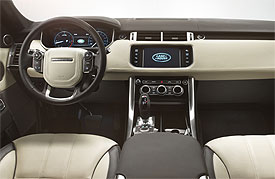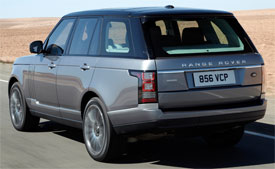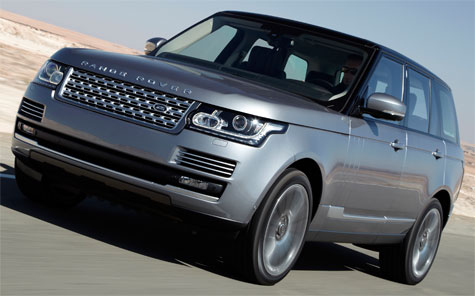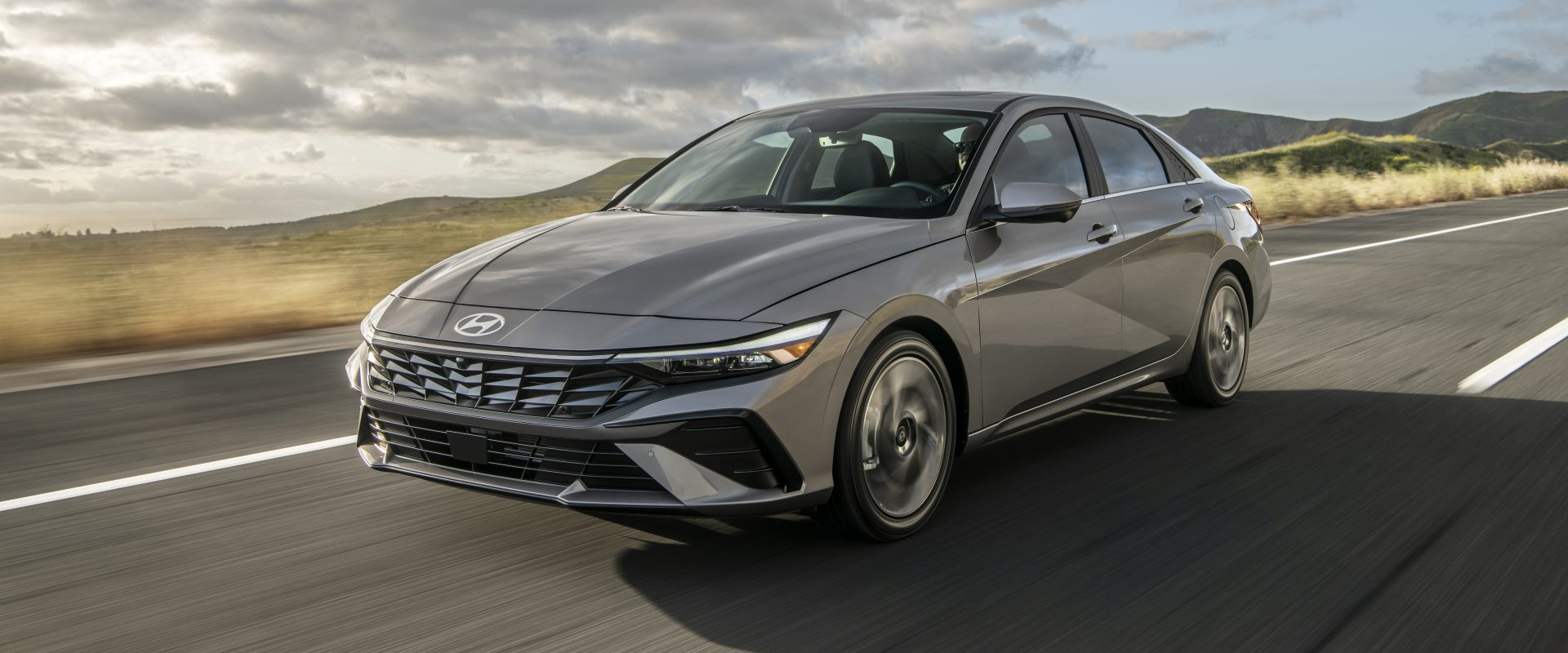2013 Land Rover Range Rover
Britain’s Land Rover brand has always been an off-road innovator. Faced with a shortage of steel, the original 1948 Land Rover had body panels made of lighter weight aluminum. Then in 1970, the brand invented an SUV fit for the queen with the Range Rover. Now, with demands for better fuel economy coming from both governments and owners, Land Rover has fused these two traditions into an all-new range rover. It’s one posh utility that’s blazing the trail for the rest of its kind.
It doesn’t look much different than before, but the 2013 Land Rover Range Rover is very revolutionary. Yes, it’s slightly bigger and maybe a tad sleeker than before, but that slant-back, boxy shape remains intact. One change; the split tailgate is now powered.
The big news lies deep within where thanks to a weight saving aluminum unibody, the new Ranger Rover is the first all-aluminum SUV ever.
The structure lops off an impressive 700 pounds off total vehicle weight, which translates directly into better fuel economy. Along with a new 8-speed automatic transmission, the Combined fuel economy rating jumps nearly 15%. A huge move for normally gas-guzzling ultra-luxury SUVs and one that will not be lost on rivals.
 Speaking of luxury, inside all is well but also improved. The serious interior ups the ante in material quality. There’s fine leather and real wood aplenty. And speaking of up, rear seat leg room is way up, with over 4½ inches added for your golfing buddies. The conflagration of interior switches has been cut in half. It’s cleaner and much more intuitive. Though we’re not sure adding Jaguar’s rotary shift knob was such a great idea.
Speaking of luxury, inside all is well but also improved. The serious interior ups the ante in material quality. There’s fine leather and real wood aplenty. And speaking of up, rear seat leg room is way up, with over 4½ inches added for your golfing buddies. The conflagration of interior switches has been cut in half. It’s cleaner and much more intuitive. Though we’re not sure adding Jaguar’s rotary shift knob was such a great idea.
There’s a host of new driver-assist technologies, including Adaptive Cruise Control, Intelligent Emergency Braking, Blind Spot Monitoring, and Reverse Traffic Detection. If only it would just park itself. Well, actually it’ll do that too. Off roading potential continues to be more than the vast majority of owners can appreciate. We sampled the latest Rover in the Utah desert, and beating this luxo-ute up in these conditions seemed a bit of a sacrilege, but incredibly fun nonetheless.
Land Rover has made it even easier for owners to test the Range Rover’s dirt loving capabilities with an updated Terrain Response System. You just dial in an appropriate setting for your current conditions, and as much as 5.7-inches of additional ground clearance.
Under the hood is the familiar 5.0-liter V8 in both Regular and Supercharged form. Sadly no diesels will be available here. But we have no real complaints, as this direct-injected V sounds great whether putting out 375-horsepower in base form or 510 with the supercharger.
 For our track work, we chose a Supercharged Rover, and it wasted no time blasting us to 60 miles-per-hour, in just 4.9-seconds. It raises its nose, and climbs swiftly through the ¼-mile in 13.3-seconds and 109 miles-per-hour, feeling even faster. That’s somewhat surprising since even with the weight loss this SUV still tips the scales at over 5000 pounds. Despite that, through our handling tests the new Range Rover felt as stiff and responsive as some so-called sport sedans. Yes, it’s still tall and a bit top heavy, but body roll is manageable and steering is telepathic and quick.
For our track work, we chose a Supercharged Rover, and it wasted no time blasting us to 60 miles-per-hour, in just 4.9-seconds. It raises its nose, and climbs swiftly through the ¼-mile in 13.3-seconds and 109 miles-per-hour, feeling even faster. That’s somewhat surprising since even with the weight loss this SUV still tips the scales at over 5000 pounds. Despite that, through our handling tests the new Range Rover felt as stiff and responsive as some so-called sport sedans. Yes, it’s still tall and a bit top heavy, but body roll is manageable and steering is telepathic and quick.
For the record, Government Fuel Economy Ratings rise to 14-City, 20-Highway, and 16-Combined. With the supercharger, you’ll do just one worse at 13, 19, and 15. Still thirsty by car standards but quite good for its luxo-class.
And it is a pricey one. But, given Range Rover’s total commitment to luxury with true all-terrain prowess, a base of $83,500 isn’t out of place, and it’s still way less than a Mercedes G Class.
Indeed, the 2013 Land Rover Range Rover; is equally at home on both back country trails and Rodeo Drive. There’s no denying it is one impressive piece of automotive engineering. And, by combining the best of its history and today’s technology, is pointing all sport-utes towards a viable future.
Specifications
- Engine: 5.0-liter V8
- Horsepower: 375 or 510 with supercharger
- 0-60 mph: 4.9 seconds
- 1/4 mile: 13.3 seconds @ 109 mph
- EPA: 14 mpg city/ 20 mpg highway
2024 Hyundai Elantra
Basic Transportation At Its Best…And That Is A Compliment
For those of you who write in every week bemoaning the fact that all we seem to do around here is test incredibly expensive cars and EVs that only the very well to do can afford, this one’s for you. It’s a commuter and budget friendly mainstay from Hyundai, the compact Elantra sedan. And, it has been nicely updated for 2024.
We clearly do enjoy driving high-performance machines and ultra-luxury rides around here, but like most of you, when it comes time to drive home at the end of a long workday, we do so in something much more practical and affordable, like this 2024 Hyundai Elantra sedan.
If you’re thinking the front end has gotten more aggressive, you’re right. Hyundai calls it a “Shark Nose” theme, and we’re guessing they were thinking more Great White than Hammerhead, though Megamouth shark would also apply. It helps for a low and wide look; more substantial than the typical compact. Other additions for ’24 include slimmer daytime running lights, revised stainless steel Hyundai emblem, reshaped front fenders, sport sedan-style rear diffuser with silver trim; a parametric pattern added to the C-Pillar, and new LED taillights that take up a lot more space on the highly sculpted decklid. Plus, new wheel designs in sizes ranging from 15- to 18-inches.
Standard engine in SE, SEL, and Limited grades is this naturally aspirated 2.0-liter I4 with 147 horsepower and 132 lb-ft of torque. Even with no hybrid assistance, it gets substantial Government Fuel Economy Ratings of 31 City, 40 Highway, and 34 Combined; we averaged a great 38.6 mpg of Regular.
Those high fuel economy numbers mean acceleration times are pretty high as well. It was in no particular hurry to get off the line at our test track, as after a slight jolt of power, it felt pretty sluggish going down the track, taking us a lengthy 9.4 seconds to hit 60 mph. Hyundai’s Intelligent Variable Transmission has some realistic simulated gear shifts built in, and they not only provided the feel of a true automatic, but kept engine noise from becoming overbearing. And while this 2.0-liter may not be a house-on-fire off the line, it has no problem keeping up with traffic, and feels like just the perfect amount of power for a practical and safe commuter car.
There are other engine options too. Two choices if you want to go faster, a 1.6-liter turbo with 201 horsepower in the Elantra N Line, and a 276-horsepower turbocharged 2.0-liter for the Elantra N; plus, one with even better fuel economy, a 1.6-liter hybrid with a 139 horsepower total output.
And despite some significant understeer, there was good feel through the cones of our handling course, both in steering and chassis feedback. We wouldn’t quite call it “point and shoot,” but it responded to inputs fairly quickly, with only moderate body roll. All-in-all, when it comes to performance, it doesn’t claim to bring a whole lot to the table, but does clearly overachieve with what it does bring.
And Hyundai is always overachieving when it comes to packing in features, yet has found a way of keeping things refreshingly simple with a good mix of touchscreen and manual controls. Lots of space too, both up front in the surprisingly wide front buckets, and in the rear bench with ample room for three. Updates for all Elantra interiors include softer materials on the door panels, upgraded instrumentation and additional charging ports, plus a surround view monitor and new H-Tex simulated leather for Limited trim.
Elantra pricing starts with an SE at $22,775, the SEL comes in at $24,725, Limited begins at $28,215, and the sporty N Line starts at $29,615. If you’re interested in the hybrid, base Blue starts at $27,400 with Limited at $30,600.
Some might say there’s not a whole lot that’s earth shaking about the 2024 Hyundai Elantra, but that’s mostly why we like it so much. When it comes to just delivering good, basic transportation with a high dose of unexpected amenities, Hyundai delivers once again.
Specifications
- Engine: 2.0-liter I4
- Horsepower: 147
- 0-60 mph: 9.4 seconds
- 60-0 Braking: 111 ft (avg)
- MW Fuel Economy: 38.6 MPG (Regular)
- Transmission: IVT
- Torque: 132 lb-ft
- 1/4 Mile: N/A (Track Maintenance)
- EPA: 31 City / 40 Highway / 34 Combined







